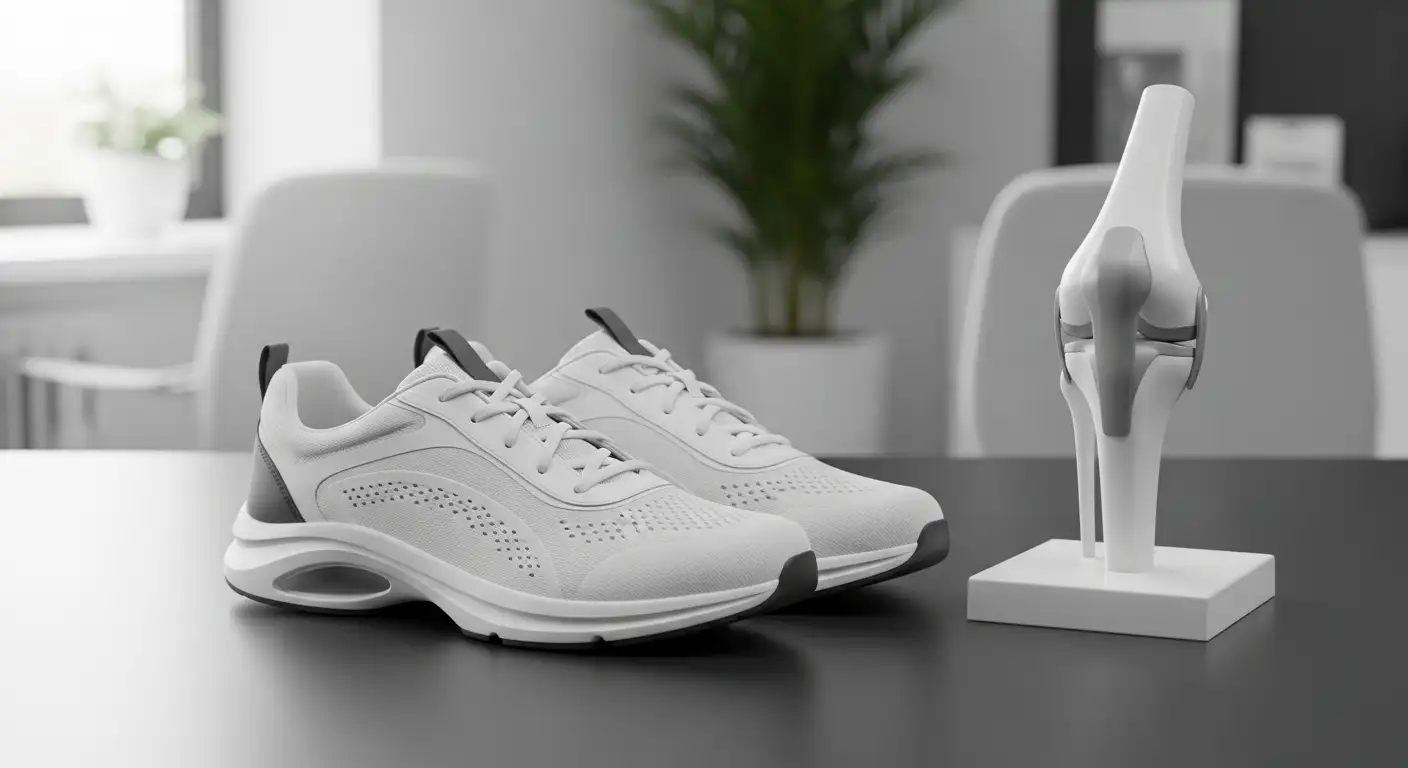Understanding Knee Pain
Knee pain affects many individuals, impairing daily activities and exercise routines. Understanding the causes and how it impacts mobility is crucial for effective management and treatment.

Causes of Knee Pain
Knee pain can arise from a variety of factors. Some common causes include:
CauseDescriptionInjuriesStrains or sprains from physical activities, common in athletes. The gastrocnemius muscle is particularly susceptible due to its connection to both the knee and ankle joints.ArthritisConditions such as osteoarthritis and rheumatoid arthritis contribute to joint pain and inflammation.TendinitisIrritation of the tendons, often due to overuse or strain during exercises.BursitisInflammation of the bursae, small sacs of fluid that cushion the bones, tendons, and muscles around the joints.Mechanical IssuesMisalignment or deformities in the knee structure can lead to pain and discomfort.
Impact of Knee Pain on Mobility
Knee pain significantly impacts an individual's mobility and quality of life. It can limit range of motion, making activities such as walking, climbing stairs, or bending difficult. Individuals may experience:
ImpactDescriptionReduced Range of MotionDifficulty in fully bending or straightening the knee, affecting daily tasks.Altered GaitCompensation for pain may lead to an abnormal walking pattern, increasing strain on other joints.Decreased Physical ActivityAvoidance of exercise and activity can lead to muscle weakness and further joint deterioration over time.Psychological EffectsChronic pain can result in anxiety or depression, impacting overall well-being.
Addressing knee pain is essential for restoring mobility. Incorporating targeted stretches, such as the gastrocnemius stretch, can aid in alleviating discomfort and improving function. Regular stretches and exercises, including the prone quad stretch or knee exercises for seniors, can also contribute to better knee health.
Significance of Gastrocnemius Muscle
Understanding the gastrocnemius muscle is essential when addressing knee pain and overall mobility. The gastrocnemius plays a significant role in the functioning of the calf and lower leg.
Anatomy of the Gastrocnemius
The gastrocnemius muscle consists of three distinct muscles: the gastrocnemius, soleus, and plantaris. Among these, the gastrocnemius is the most prominent, forming the bulk of the calf muscle [1].
Muscle NameDescriptionGastrocnemiusMost visible and forms the bulk of the calfSoleusLocated beneath the gastrocnemius and aids in plantarflexionPlantarisSmall muscle with a role in knee flexion
The gastrocnemius has two heads, medial and lateral, that originate from the femur and attach to the heel via the Achilles tendon. This structure allows for efficient movement during activities like walking, running, and jumping.
Role in Calf Function
The gastrocnemius muscle is crucial for various calf functions, including plantar flexion of the foot, which is essential for activities such as pushing off the ground during walking or running. Tightness in this muscle can lead to imbalances in lower body mechanics, affecting not only the calves but also the knees and ankles.
Tight calf muscles may impact weight distribution and place added pressure on other areas of the body, leading to foot, ankle, and knee issues [2].
Regular stretching of the gastrocnemius, such as through the gastrocnemius stretch, helps maintain flexibility in this muscle, reducing the risk of injuries, improving balance, and ultimately enhancing overall mobility. Keeping the gastrocnemius and accompanying muscles flexible contributes to better knee health and function, proving essential in managing and preventing knee pain.
Importance of Gastrocnemius Stretches
Incorporating gastrocnemius stretches into a regular fitness routine can play a vital role in managing knee pain and enhancing overall mobility. The gastrocnemius muscle, located in the calf, connects to the knee joint, and keeping it flexible is crucial for optimal knee function.
Benefits of Gastrocnemius Stretches
Gastrocnemius stretches offer several advantages:
BenefitDescriptionImproved FlexibilityStretching the gastrocnemius muscle enhances flexibility, which is essential for a full range of motion in the knee joint [3].Reduced Risk of InjuryRegular stretching contributes to reducing the risk of joint injuries, strains, and muscle damage [4].Enhanced BalanceImproved muscle flexibility aids in better balance and coordination, which can help prevent falls, especially in seniors [4].Support Pain ManagementStretching can alleviate tightness in the calves, potentially reducing knee pain Harvard Health Publishing.
Techniques for Effective Stretching
To maximize the benefits of gastrocnemius stretches, it's essential to use proper techniques. Here are some effective methods:
TechniqueDescriptionStatic StretchingHold stretches in place without bouncing. For example, leaning against a wall with one leg straight and heel on the ground stretches the gastrocnemius effectively.Dynamic StretchingInvolves moving the calf muscles through their full range of motion. This can include calf raises or walking lunges to warm up the muscles.Frequency of StretchingRegular stretching should be done at least three to four times per week to see significant improvement in flexibility. Consistency is key for maintaining gains.
Maintaining calf flexibility, particularly through targeted stretches like the gastrocnemius stretch, is vital for knee health. For additional stretches focusing on other muscle groups that may impact knee function, consider exploring quad tendonitis exercises or hamstring stretches for seniors. Regular practice can help promote overall wellness and mobility.
Recommended Gastrocnemius Stretches
Incorporating gastrocnemius stretches into a routine can significantly alleviate knee pain and enhance mobility. Below are three effective stretches that can help maintain calf flexibility and contribute to overall leg health.
The Wall Stretch
The wall stretch is a straightforward and effective way to stretch the gastrocnemius muscle. To perform this stretch:
This stretch helps to lengthen the gastrocnemius muscle, relieving tension around the knee. For more details on this technique, visit David Redfern Surgery.
The Stair Stretch
The stair stretch is another effective method for targeting the gastrocnemius. Here’s how to do it:
This stretch is beneficial for increasing flexibility in the calf area, which can directly influence knee pain. Additional information can be found at David Redfern Surgery.
The Band Stretch
To use the band stretch, follow these steps:
This stretch is particularly effective for targeting the gastrocnemius while allowing for controlled tension, thus minimizing the risk of injury. For further details regarding this technique, refer to David Redfern Surgery.
Incorporating these gastrocnemius stretches into a daily routine can be a helpful approach to managing knee pain. For those looking to diversify their stretching regimen, there are other options available such as the prone quad stretch and biceps femoris stretch.
Addressing Tight Calves
Tight calves are commonly overlooked but can significantly contribute to knee pain and overall discomfort. Understanding the consequences of tight calves and incorporating appropriate stretching techniques are essential steps in addressing this issue.
Consequences of Tight Calves
Tight calf muscles can lead to several complications, including:
The table below summarizes the potential complications linked to tight calf muscles:
ConsequenceDescriptionAchilles tendonitisInflammation around the Achilles tendon leading to pain and discomfort.Shin splintsPain along the shinbone caused by stress and tension.Knee painIncreased strain on the knee joint due to limited lower leg mobility.Plantar fasciitisInflammation of the tissue on the bottom of the foot, often resulting from altered gait.Poor squatting formLimited ankle flexibility impacting squat alignment and effectiveness.
Stretching for Calf Muscle Health
Regular stretching is crucial for alleviating calf tightness and promoting overall muscle health. Daily exercises, such as calf stretches, can assist in lengthening muscle fibers and reducing discomfort [2].
Some effective stretching techniques include:
Incorporating these stretches regularly can help improve flexibility, reduce pain, and enhance overall movement patterns. For additional exercises targeting specific muscle groups, consider exploring knee exercises for seniors or techniques to prevent injuries, such as quad tendonitis exercises. Regularly performing these stretches can significantly contribute to calf muscle health, alleviate tightness, and help in managing knee pain effectively.
Calf Muscles and Overall Health
Impact of Calf Flexibility
Calf flexibility plays a vital role in overall mobility and knee health. Tightness or pain in the calves can limit ankle dorsiflexion, which may negatively impact squat form and lead to discomfort and injuries such as Achilles tendonitis, shin splints, and knee pain. Maintaining flexibility in the calf muscles, including the gastrocnemius and soleus, is essential for enhancing balance, stability, and the efficiency of movements.
IssueEffect on MovementTight CalvesLimited ankle flexibility, altering squat formMuscle TightnessIncreased risk of joint injury and painLack of FlexibilityDisruption in kinetic chain, potentially leading to injuries
Regular stretching contributes to improved balance and reduced risks of injury, making flexibility an essential part of fitness and rehabilitation routines.
Incorporating Stretching into Daily Routine
To ensure optimal calf muscle health, it is recommended to incorporate stretching routines into daily life. Developing a habit of performing calf stretches can prevent tightness and subsequent issues.
People should focus on stretches not only for the calves but also for other critical areas such as the hamstrings, hip flexors, quadriceps, shoulders, neck, and lower back. Consistent stretching can enhance overall flexibility and joint health [4].
Daily Stretching Recommendations:
StretchSuggested DurationFrequencyGastrocnemius Stretch15-30 seconds2-3 times dailySoleus Stretch15-30 seconds2-3 times dailyHamstring Stretch15-30 seconds1-2 times daily
Integrating these stretches into one's routine can significantly aid in maintaining flexibility, preventing falls, and reducing the risk of joint pain and muscle damage. For more information on effective stretching techniques, visit our articles on prone quad stretch, hamstring stretches for seniors, and knee exercises for seniors.
References
[2]:
[3]:
[4]:
[5]:





